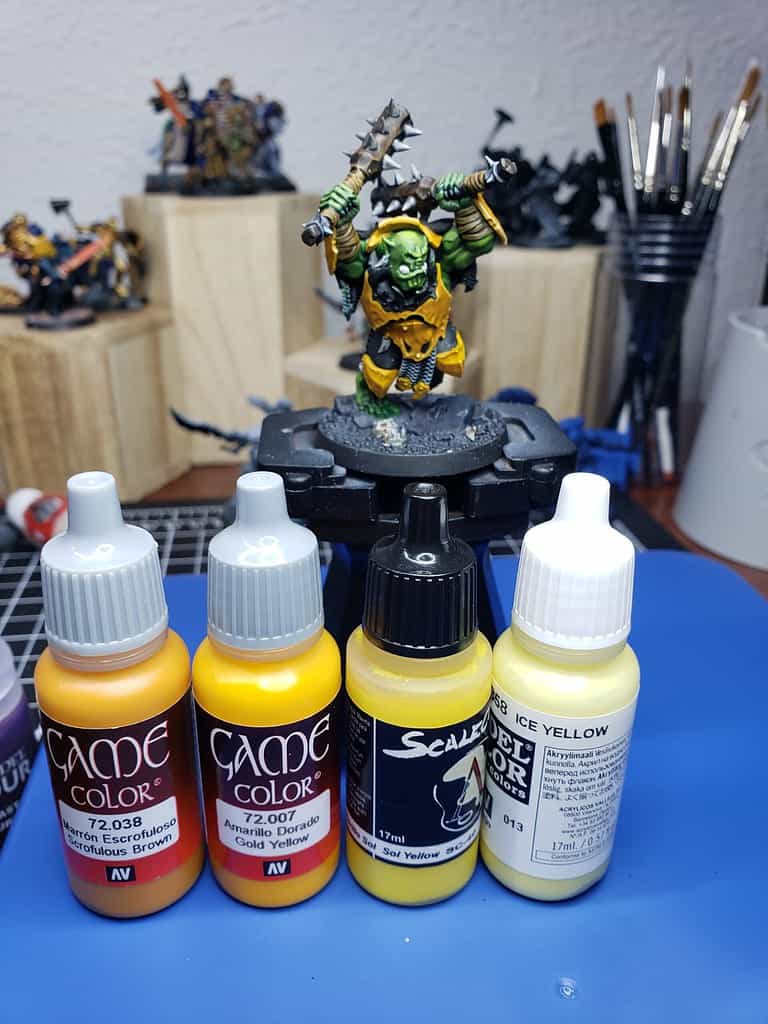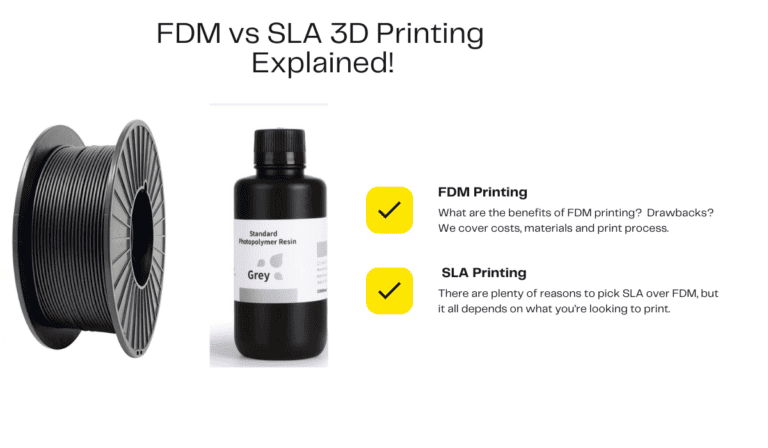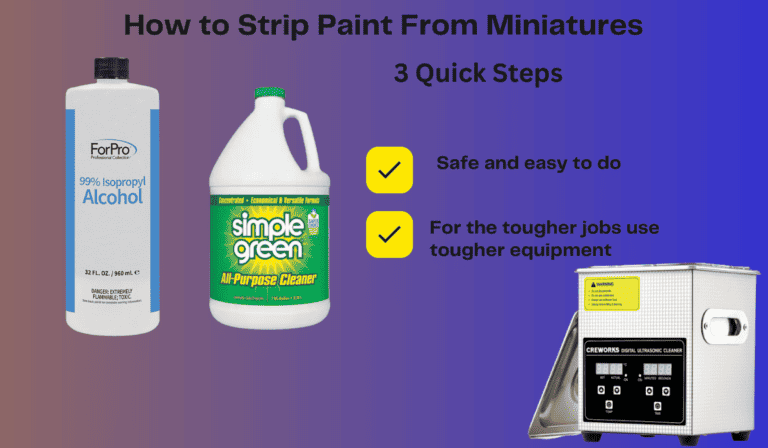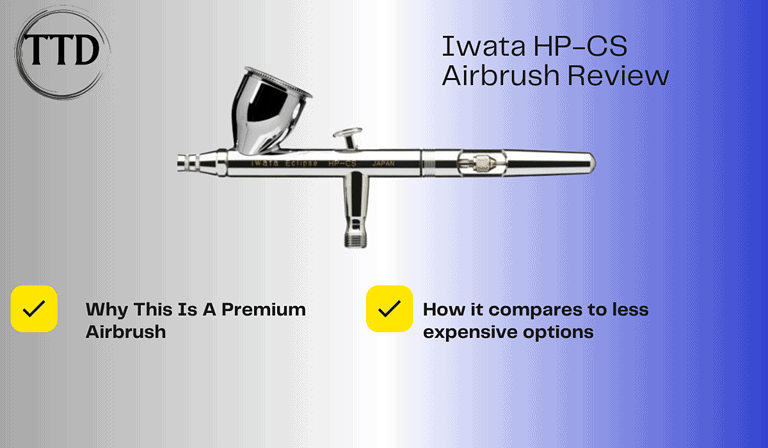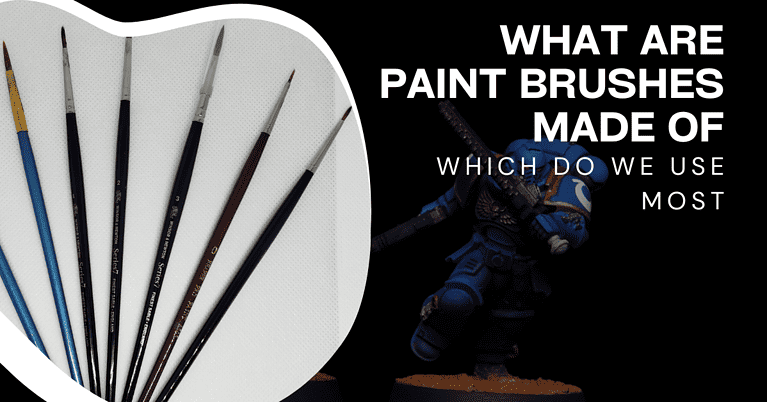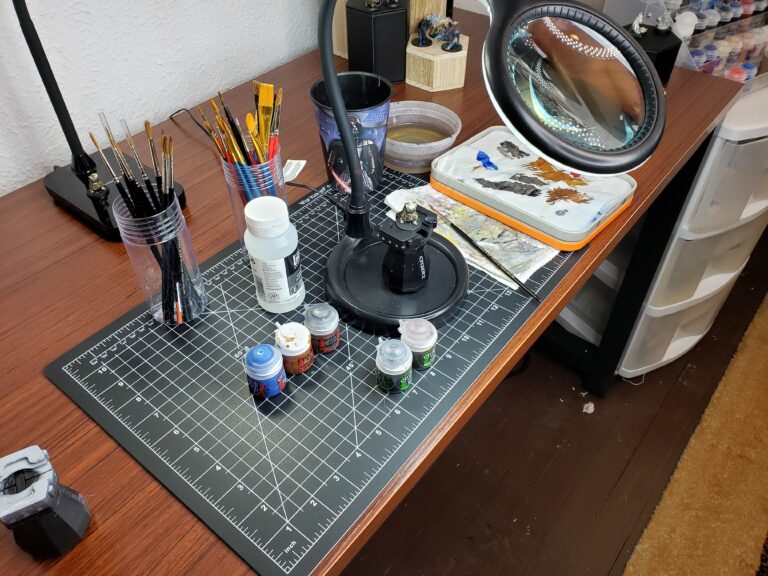Miniature Painting for Therapeutic Purposes: Depression, Stress and Anxiety
This post will be my attempt to bring light to the Miniature Painting hobby as an art form, and how it can help relieve stress, anxiety and depression.
Discovering painting has helped me personally, and I’ve seen a lot of people say the same.
The other point I wanted to make was how this particular type of art can resonate with an audience that might not otherwise think they are artistic or creative.
Painting, along with other creative activities, has long been associated with improving mood. There are multiple studies and articles that document how creative hobbies can help people struggling with mental health issues.
From my own perspective, I can say that miniature painting is a great source of stress relief. If you take the right approach, you can use this hobby as a form of meditation. A relaxed, methodical, creative process.
How Can Miniature Painting Help with Anxiety, Stress and Depression?
Miniature Painting can help with Anxiety, Stress and Depression in a few ways. The first is a peaceful and relaxing hobby for you to enjoy spending time on. It allows your mind to calm down and take a break from screens and media.
The second is the physiological response your body has to achieving goals. Setting and reaching these objectives triggers our brains reward system. Learning to paint, and completing a miniature to admire are both excellent ways of tapping into this brain function.
Let’s talk about why you might really enjoy it, which is of course a great way to help with stress.
If you’re like me, you may have tended to think of painting as something that someone like Picasso or Van Gogh does. A high culture practice done by very talented people. Something you could never accomplish.
Or maybe you think it’s painting flowers and rainbows. Painting a bowl of fruit. Abstract colors on a canvas. Weird mixes of lines and swirls. Something that’s just not for your tastes.
I’m here to tell you that it can be a lot of fun, and very rewarding. If you’re into things like Dungeons and Dragons, Star Wars, the Marvel Superheroes, Sci Fi, Fantasy, World War 2, aircraft, ships, trains, race cars, or any number of other topics, miniature painting has something for you.
I’d love to help open the eyes of people who would love the hobby if they knew more about it.
The second part of all this is the sense of accomplishment. Either by completing a miniature you are proud of, or learning a new painting technique that excites you.
Every time you set and accomplish a goal, your brain will respond. You will get a surge of dopamine, and you’ll start the process of rewiring your brain for that activity.
Both of those responses are steps on the path of improving your overall mood.
The last consideration I wanted to add here is, the unknown. We have studies that show creative processes lead to more happiness and improved mood. We don’t know the full story of why, but the evidence is there.
Adding miniature painting to your schedule can be a part of the whole picture of self improvement. Quality sleep, good nutrition, exercise and activity, getting outside in to the sunlight. All these things are shown to help.
It helped me, and I hope it helps you to. Now let’s talk about how to get going:
Miniature Painting as Therapy: Four Simple Steps to Try
Work on your Environment: Where you paint makes a difference. Ideally you want a dedicated space, free from distraction. Natural light helps some people relax. Remove as much resistance as possible.
Try Different Painting Techniques: Try different methods to see what fits best for you. Some people find comfort in step by step instructions to achieve a finished painting. Others like to go by feel and create as they go.
I will give options for you to try in this article and the blog has a lot of information for you as a whole.
Combine Painting with Music, Podcasts or Videos: Many people have music or a podcast on as a background to painting. Video works as well although I would suggest something you’ve seen before or doesn’t require much attention.
Set Goals and Schedule Times: Painting can be a form of self help and relaxation. A way to de-stress and recharge. Schedule time for it rather than look for chances when they arise. Simple goals and schedules can help keep you on track.
With that brief summary laid out, I’ll go into more depth on each below:
Working on Your Miniature Painting Environment:
I specifically worded this as “working on” because it’s something you can constantly improve or adjust to taste. My hobby space inevitably gets cluttered, When I do get around to cleaning up, it always makes me feel better.
I also understand that not everyone can find an ideal space. Not to worry, you can make due with whatever you have available, and create portable workspaces that you can take out and put away when you’re done.
So let’s go:
Finding a Quiet Spot to Paint
The ideal space for me is free from distractions. It’s a place I can go to that is dedicated to the single purpose of painting minis.
That space can be anywhere that works for you. Some people paint on the kitchen table at a time when nobody is around. Some people go out to the garage, or up to an office like me.
Wherever you go, identifying the “where” is a good first step in finding the right environment to paint.
A Good Hobby Desk and Chair
This may seem obvious but it’s worth paying attention to. If you have a home office you may already have what you need. The only caution there I would give is that ideally, you want a separate space for work and hobbying.
What I find to be ideal is the following:
A comfortable chair to sit in, something that supports me when I lean back, and firm when I lean forward. This may sound odd but I use a comfortable folding chair in my set up.
It’s a padded seat, firm back and I am comfortable in it. When I paint I tend to lean forward, and the stiff seat with some cushion just works for me.
As for my desk, I keep it very simple. Large, flat surface. With that as my starting point I can put everything I need in its place. Paints in a paint rack, brushes in a cup, water, magnifying lens, lighting, glue, vortex mixer, and everything else.
The best solution I’ve found for a relaxing painting session is to have what I need within reach, but not be cluttered. I can just sit down, and get started.
Natural and Artificial Lighting
Natural sunlight has been shown to improve mood and increase happiness. There are also benefits to sleep quality. So sitting by a window would be a very good addition to your hobby space.
If that’s not available, not to worry. You’ll need artificial lighting sources regardless. A good lamp is almost essential for painting miniatures. You need to be able to clearly see what you’re doing.
I always recommend a daylight bulb, 5000k color temperature. It gives a beautiful, white, clean light. This allows for accurate representation of the colors you’re putting on your miniatures.
Music, Video and Ambient Sounds
Obviously this is subjective. What works for me might not be your preferences. I will just say here that there is a very clear pattern of painters putting on music or some kind of background sound on.
In my case I often like to have my favorite Youtube channels going. Or maybe re-watch Lord of the Rings for the millionth time. Other times I’ll put on a music playlist.
But my favorite background is podcasts. The Glass Cannon Podcast helped me get a lot of painting done!
Removing Resistance and Friction
This is a catch all for how to make painting easy and desirable. What makes it a treat for you, something you look forward to?
I find that a few things help here:
Clarity: What specifically are you going to do? Set a goal. I will sit down and base coat my dragon miniature tonight. I will use these 3 paints.
No Friction: Everything I need should be super easy to get to. All I need to do is sit down and start. No fumbling for paints, brushes, a space to sit, lighting or anything else.
Rewards: What is a reward to you? Maybe it’s that you get to listen to your favorite podcast in peace. Maybe it’s just the pleasure of painting. Maybe you have a bit of desert when you paint. Whatever it is, try to make this time something you look forward to.
Habits: Try to tie this into an existing habit you have. “Every night after I brush my teeth, I’ll paint for 20 minutes.” or “After dinner on Tuesdays and Thursdays I get to paint for an hour.”
Identity: If you see yourself as a painter, you’ll continue with painting. Every time you sit to paint, you are giving yourself a vote in favor of the painter identity. Build that up over time.
Relaxing Miniature Painting Techniques to Try
Basic Paint by Number Method:
Paint by numbers is sort of a tongue in cheek way to refer to this. What it comes down to is simply assigning colors to parts of your miniature. It’s a very simple, and therefore relaxing way to paint.
For example: On this miniature I want Blue armor, gold trim, red eyes, and black bolter gun and armor joints.
Once you decide that, take out the blue you will use, the gold, the red and the black. Put the paint on the appropriate spots. Very simple!
SlapChop Method:
SlapChop is a very popular method to paint miniatures that is a bit more involved, but still easy to pick up. I have a full write up and guide here on Slapchop.
The quick version is: Prime your miniature black. Lightly spray or dry brush light grey (or white) onto the higher points of the miniature. Things like the top of someones head, their shoulders, etc.
Next dry brush white onto the very top portions of the miniature.
Finally, add a layer of contrast paint on to all the surfaces. This is done in a similar way as “paint by number”. You decide what parts will be what color, and apply the appropriate shades of contrast paint.
Paint as You Go:
I’m calling this paint as you go, but what I mean by this is simply start painting with no real objective in mind. You can let you mind wander, and paint however you end up painting.
This method is great for relaxing and clearing your mind. I don’t do this all the time, and in fact only very occasionally. When I do it though, it feels great to just let go.
This is also helpful to test new colors, new painting techniques like blending, or just to mix things up.
Citadel Battle Ready:
The Citadel Battle Ready method is also a beginner level process to try out. It consists of:
- Prime your miniature
- Base Coat the miniature
- Apply a Wash or Shade to the miniature
I go into depth on it in this article, but it’s really just adding a wash after the “paint by numbers”. I like this method a lot, it’s how I started painting miniatures. It’s simple enough to learn as a beginner, and it gives a good result for not a ton of effort.
Habits, Setting Goals and Scheduling Time to Paint
I wanted to give this it’s own section, even though I touched on it earlier. If you are suffering from depression, anxiety and/or stress, I would urge you to start to build a simple schedule.
The top tier of this schedule should include: sleep, nutrition, sunlight and exercise.
Under that, should be creative activities like miniature painting, meditating, and even therapy if needed.
Schedules and habits can help with all of this. I highly recommend the book Atomic Habits to anyone who struggles with consistency. You can even listen to the audiobook while you paint!
His 4 laws of behavior change are, in his words:
- Make it OBVIOUS: Don’t hide the books you need to read or the fruit you want to eat, display them to remind yourself to form new habits.
- Make it ATTRACTIVE: Read the books you like to read, and it’ll encourage you to read more.
- Make it EASY: If you want to eat more fruit, eat the fruits that are easy to eat.
- Make it SATISFYING: If you are satisfied, you will want more.
If you can set up your environment to make the things you should be doing obvious, attractive, easy and satisfying, you’ll have a much higher chance of success.
I hope this has helped someone! Comment below if you have any questions. I’ll do my best to answer.
Citation:
Chloe E. Bell BA & Steven J. Robbins PhD (2007) Effect of Art Production on Negative Mood: A Randomized, Controlled Trial, Art Therapy, 24:2, 71-75, DOI: 10.1080/07421656.2007.10129589

